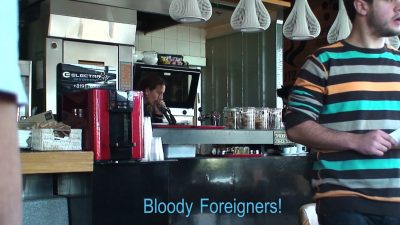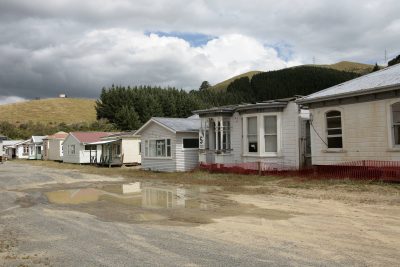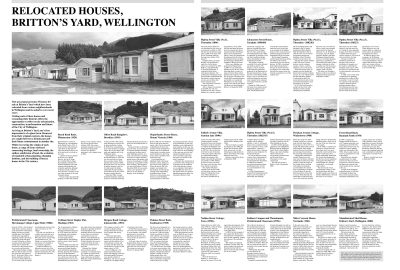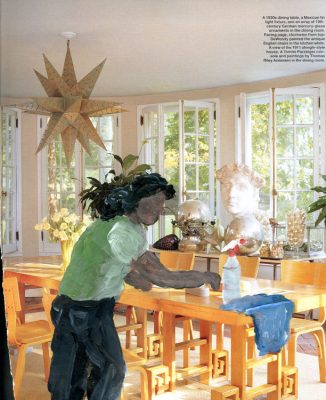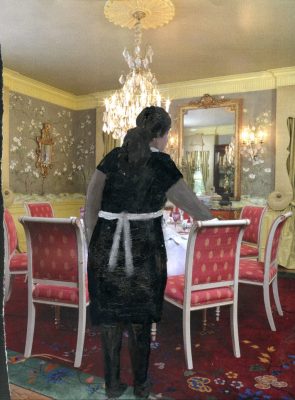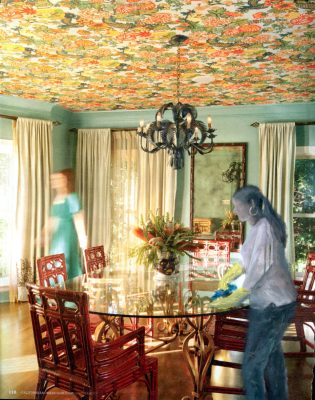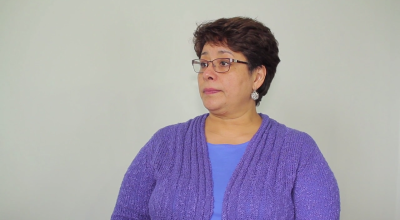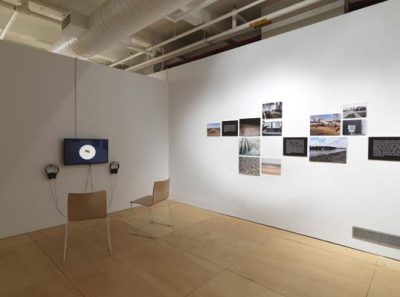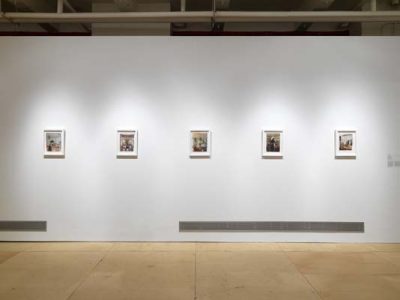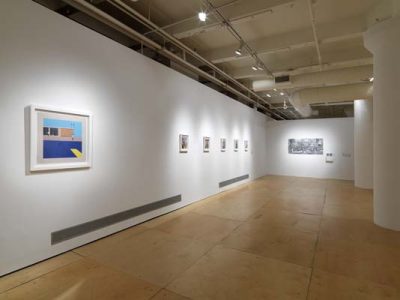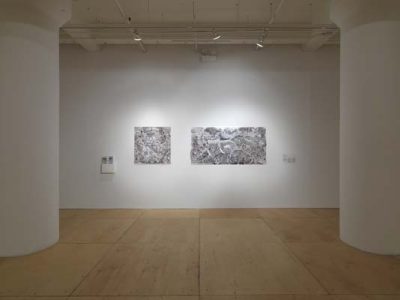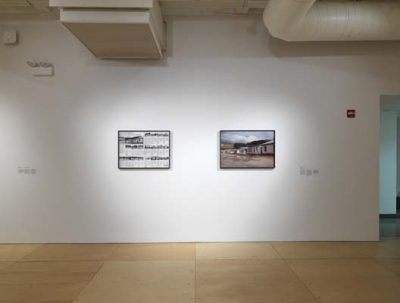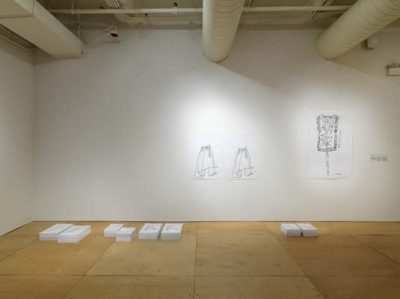Exhibitions
ABOUT THE EXHIBITION
Economic globalization has more closely integrated local, national, and regional economies across the world, creating not only greater interdependence, but significant geographic and spatial change. Here, There, Everywhere is a group exhibition focused on spatial configurations of economics and their related effects. Ranging across physical and conceptual territories, the artworks in the show address the globally networked and the locally specific, sometimes focusing on intensified movements of goods, services, capital, and persons, and at others on the transformations of specific locales.
Lara Almarcegui ’s work explores a neglected and overlooked site in Wellington, New Zealand where a strange street of houses sits on the outskirts of the city. These buildings removed from their original locations, are displayed temporarily whilst awaiting sale. Over the course of the past few years, during her stay in Western countries, Alevtina Kakhidze has taken on the habit of drawing consumer goods that she contemplates in shop windows, valuing each drawing to correspond with the retail price of the object. Kakhidze ’s The Most Commercial Project questions value and materialism, from her own Ukrainian perspective and a more global approach. Guy Ben Ner ’s video, Foreign Names, focuses on worker displacement in a compendium of video clips from an Israeli coffee shop chain. Highlighting the replacement of waiters with technological devices, Ben Ner ’s video laces together vignettes in which counter staff at the coffee shops call out fictitious names of customers. The texts edited together become a lament of the waiters ’ disappearance and the state of workers today. Ramiro Gomez ’ paintings and collages bring attention to the invisibility of the working class, in particular overlooked or ignored domestic labor. Once a live-in nanny himself, Gomez paints nannies, housekeepers, and landscapers into media images of empty luxury homes. The Beehive Collective is a US-based graphics workshop that creates political posters and mosaics on subjects of globalization and geographical transformation. In Mesoamérica Resiste, Beehive illustrates stories of resistance and solidarity from Mexico to Colombia. Ryan Griffis & Sarah Ross apply a regional lens to think expansively about the disparate geographies that might exist within the space of one small town or across continents and oceans. Their project Between the Bottomlands & the World investigates a rural Midwestern town, a place of global exchange and international mobility, inscribed by post-NAFTA realities.
Here, There, Everywhere is part of an ongoing series of exhibitions and events, Standard of Living: Work, Economies, Communities, that explore shifts in economies and in work. Topics covered in the series include how and where economic exchange takes place, new models for sustainable economies, employment-driven migration, and relationships between place, work, and economic viability, among others. A key component of this series is community involvement. Partnerships, relationships, and dialogues with community organizations, labor unions, and artists help guide the development of exhibitions and events.
A supplement to Here, There, Everywhere, the Standard of Living Reading Room includes texts and resources that explore the legacies of industry, immaterial labor, service work, invisible labor and more, articulating a variety of responses to the relationships between labor, economy, and politics.
ARTISTS
Lara Almarcegui, The Beehive Collective, Guy Ben Ner, Ramiro Gomez, Ryan Griffis & Sarah Ross, and Alevtina Kakhidze.
SUPPORT
Here, There, Everywhere was made possible in part by the Institute of Museum and Library Services, the School of Art & Art History, the College of Architecture, Design, and the Arts, University of Illinois at Chicago and a grant from the Illinois Arts Council, a state agency. The Daryl Gerber Stokols and Jeff Stokols Voices Series Fund provides general support to Gallery 400. Support for the opening reception provided by Finch ’s Beer Co.


